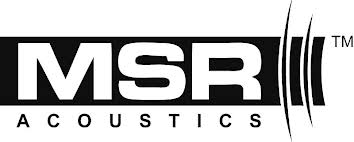PROCESS
PMI integrates exceptional A/V equipment into its award-winning custom engineering design solutions, integrating the following brands:
Grimani Systems, CinePanel, StudioPanel, MSR Acoustics, Dimension4™ Acoustical Tuning Systems, Gold Line, Acoustic Innovations, Ashly, Etymotic, Triad, Screen Research, Murano Acoustics, Salon Acoustics™


This is an outline of the various phases of an acoustic architecture design project by PMI. The phases are shown chronologically and are presented here as a guideline. Some projects may require a different sequence.
1) Questionnaire form: Following a request by a potential client, a questionnaire form is dispatched by PMI, and is to be filled out by the potential client.
Home Theater Design Questionnaire | Studio Design Questionnaire
2) Completed questionnaire and plans: The potential client is to return the questionnaire to PMI, along with complete architectural plans of the project, and any photos that may be available. PMI must receive complete and accurate architectural plans before continuing with any further phase of the project.
3) Site visit: Upon request of the potential client, PMI can conduct a site visit of the project, and help complete the questionnaire form. PMI can also document the project site by taking physical and acoustical measurements and photos. The potential client will pay PMI for time and expenses for this site visit, at the standard hourly rates outlined in the Work Agreement.
4) Proposed agreement: Upon receipt of the completed questionnaire+plans+pictures, PMI will evaluate the scope of the project. PMI will then propose a contract outlining the project scope, an estimate of costs, and a retainer deposit amount.
5) Completed agreement: The potential client is to review the agreement, and if it is acceptable, return it signed to PMI, together with a payment of the retainer deposit amount. If the agreement is not acceptable, PMI and the potential client will negotiate in good faith a more acceptable agreement.
6) Project time scheduling: Once the signed agreement, retainer deposit, and architectural plans are received by PMI, the project will commence with an assignment in the time schedules at PMI.
7) Information gathering: For most projects PMI will collect additional data from the client, the architect, the interior designer, the builder, the equipment vendor and the installer. This information will be added to that gathered in the questionnaire form and site visit, for use in the engineering and design phases
8) Engineering: At the calendar time scheduled in item #6 above, acoustic engineering of the project will commence. See the Design Steps listed below.
9) Initial design: Results of the engineering calculations will lead to an initial design proposal. This proposal will be sent to all those concerned with the project including the client, the architect, the interior designer, the builder, etc. Comments and reactions to the proposal are to be provided back to PMI by the deadline indicated on the proposal document. The client or his/her representative is to sign off on the initial design, along with any requested modifications.
10) Revised design: PMI will revise the initial design if needed, and produce a more detailed plan set for the project.
11) First detailed plan set: The first detailed plan set will be presented to all the parties concerned with implementation of the project. The presentation will typically be done in person by a PMI staff member, and it is expected that at least the following parties will attend the presentation: the client, the architect, the interior designer, the builder, the equipment vendor, and the equipment installer. Comments back to PMI are expected by the deadline indicated on the plan set documentation. Requested modifications will be implemented in a second detailed plan set.
12) Second detailed plan set: This second plan set is to be considered the final revision, and will incorporate all comments from all parties’ reactions to the first detailed plans. All concerned parties will receive printed copies of the final plans. The client is to sign off on receipt and acceptance of the final plan set. Electronic versions can be made available to architects, for incorporation into master design and construction plans.
13) Change orders: Occasionally during the project, conditions will change and will thus affect the work of PMI in unforeseen ways. Such changes that will result in additional work will cause PMI to generate a change order form to be signed by the client. The change order will result in additional fees to be paid by the client for implementation of the changes.
14) Site inspection: If agreed to by the parties, PMI will conduct site inspections during construction to verify that its design is correctly implemented, to answer any specific questions, and provide guidance. If any modifications are need to the construction, PMI will generate a Field Report and provide copies to those parties concerned.
15) Support: PMI shall provide an agreed-upon amount of time in support for the project to answer any specific questions, and provide guidance to those parties implementing the design. Extended project support time can be arranged for an additional agreed upon consulting fee.
16) Final inspection and calibration: If commissioned to do so, PMI shall dispatch a staff member to perform a final inspection and calibration of the Audio and/or Video system. PMI will fully document all the phases of the calibration and provide a report with measurement data to the client, showing that the project meets the objective performance goals of a high quality installation.